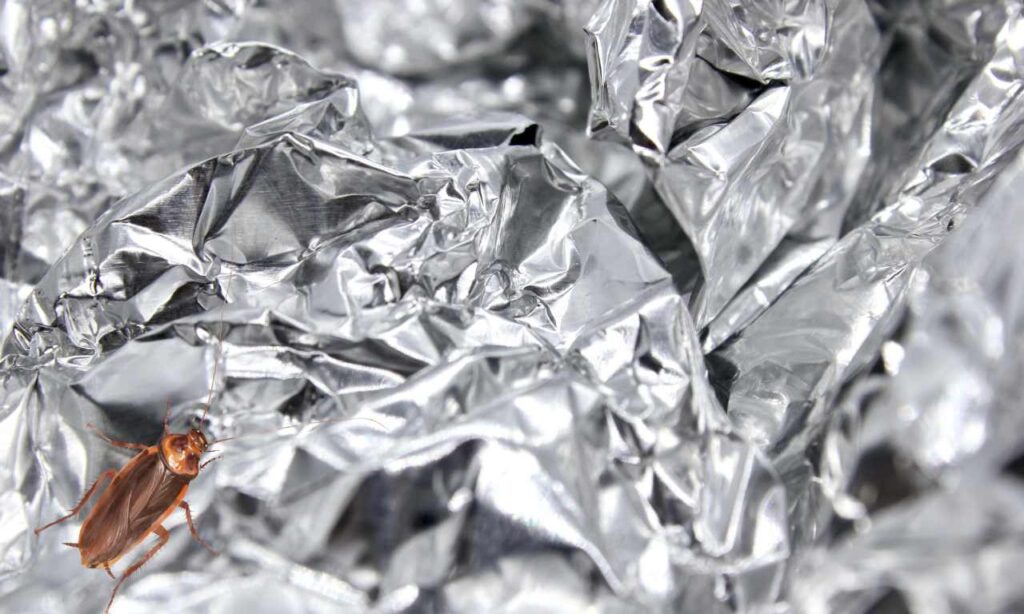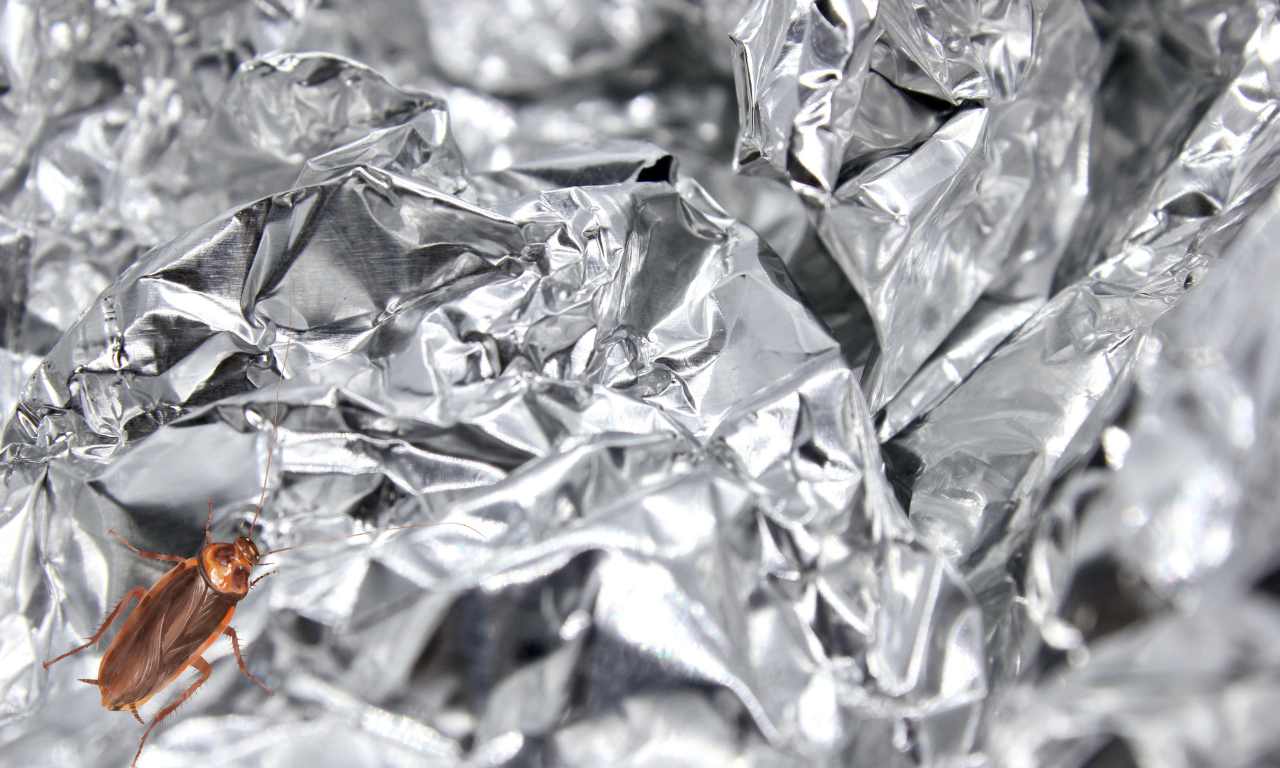
To understand whether cockroaches can eat through aluminum foil, it is important to first understand what aluminum foil is and how it is made. Aluminum foil is a thin sheet of aluminum that is typically between 0.00017 and 0.0059 inches thick. It is produced by rolling and pressing aluminum until it becomes a thin, flexible sheet.
To understand whether cockroaches can eat through aluminum foil, it is important to first understand what aluminum foil is and how it is made. Aluminum foil is a thin sheet of aluminum that is typically between 0.00017 and 0.0059 inches thick. It is produced by rolling and pressing aluminum until it becomes a thin, flexible sheet.
Cockroaches are known to be scavengers and opportunistic feeders, consuming a variety of food sources, including human food waste, plant matter, and even dead insects. However, whether or not they can eat through aluminum foil is a question that has received mixed answers over the years.
In general, aluminum foil is not considered a food source for cockroaches, as it does not contain any of the nutrients that they need to survive. However, that does not mean that cockroaches cannot damage or penetrate aluminum foil under certain circumstances.
Can Roaches Eat Through Aluminium Foil?
Firstly, it is important to note that cockroaches have strong mandibles that are capable of chewing through a variety of materials, including paper, cardboard, and even some plastics. While aluminum foil is much tougher than these materials, it is not completely immune to damage from a determined cockroach.
One factor that can influence whether or not cockroaches are able to eat through aluminum foil is the thickness of the foil. Thicker aluminum foil is less likely to be penetrated by cockroaches than thinner foil. This is because thicker foil is more durable and less likely to tear or puncture when chewed on. However, even thick aluminum foil is not completely impervious to cockroach damage, and determined insects may still be able to create small holes or tears in the foil over time.
Another factor that can influence whether or not cockroaches can eat through aluminum foil is the condition of the foil. If the foil is old and has become brittle or weakened over time, it may be more susceptible to damage from cockroaches. Similarly, if the foil is coated with food residue or other organic matter, it may be more attractive to cockroaches, who may be more likely to attempt to eat through it.
It is also important to consider the behavior of cockroaches when determining whether or not they are likely to eat through aluminum foil. Cockroaches are nocturnal creatures that prefer to avoid light and open spaces. They are also highly sensitive to vibrations and other disturbances, which can cause them to scurry away quickly.
As a result, if a piece of aluminum foil is placed in a well-lit and frequently trafficked area, it is less likely to be damaged by cockroaches than if it is placed in a dark, secluded area where cockroaches are more likely to congregate.
In addition to the factors outlined above, there are a few other things that can influence whether or not cockroaches can eat through aluminum foil. For example, the type of cockroach in question may play a role.
Some species of cockroaches are larger and more powerful than others, and may be more capable of damaging thick aluminum foil. Similarly, the age and health of the cockroach may also be a factor, as older or weaker insects may be less able to penetrate tough materials like aluminum foil.
Overall, it is clear that cockroaches are capable of damaging or penetrating aluminum foil under certain circumstances. While thicker foil is less likely to be damaged, cockroaches with strong mandibles can still create small holes or tears in even the thickest foil.
Similarly, the condition of the foil, as well as the behavior of the cockroaches and other factors, can all influence whether or not the foil is likely to be damaged by these pests.
Can Aluminium Foil Help To Get Rid Of Cockroaches?
Cockroaches are a common household pest that can cause significant problems. They are capable of transmitting disease and bacteria, and can also trigger allergies and asthma in sensitive individuals. For these reasons, it is important to take steps to control and prevent cockroach infestations.
One question that arises frequently in discussions of cockroach control is whether or not aluminum foil can be an effective tool for keeping the insects away. There are a few reasons why some people believe that aluminum foil might be useful for cockroach control.
First, it is well known that cockroaches are attracted to areas that are warm, dark, and humid, and that provide easy access to food and water sources. Therefore, covering an area with aluminum foil may help to create an inhospitable environment that is less attractive to the insects.
Second, aluminum foil is a relatively inexpensive and easy-to-use material that can be found in most households. This makes it an attractive option for those who are looking for low-cost, DIY methods for cockroach control.
However, the question remains: can aluminum foil really help to get rid of cockroaches? To answer this question, it is necessary to examine the properties of aluminum foil, as well as the behavior and habits of cockroaches.
The Properties of Aluminum Foil
Aluminum foil is a thin, flexible sheet of aluminum that is often used for cooking, baking, and wrapping food. It is made by rolling large sheets of aluminum until they are thin enough to be cut into smaller, more manageable sheets. Aluminum foil is resistant to moisture, bacteria, and odors, and can also withstand high temperatures. These properties make it a useful material for a variety of applications, from preserving food to protecting objects from the elements.
In terms of its physical properties, aluminum foil is relatively strong and durable, but it can be punctured or torn with enough force. Cockroaches are capable of chewing through a variety of materials, including plastic, paper, and fabric, so it is possible that they could also damage or penetrate aluminum foil under certain circumstances.
The Behavior and Habits of Cockroaches
Cockroaches are highly adaptable insects that are capable of surviving in a variety of environments. They are attracted to areas that are warm, dark, and humid, and that provide easy access to food and water sources. Cockroaches are also capable of detecting and avoiding obstacles, and can quickly learn to navigate around barriers in their search for food and shelter.
Cockroaches are known to eat a wide variety of materials, including food, plants, paper, fabric, and even other insects. However, they are not known to eat aluminum foil, as it is not a food source for them.
Therefore, the question of whether or not aluminum foil can help to get rid of cockroaches depends on several factors, including the behavior of the insects, the condition and thickness of the foil, and the underlying conditions that are attracting the cockroaches in the first place.
Using Aluminum Foil for Cockroach Control
 If you are considering using aluminum foil as a tool for cockroach control, there are a few things to keep in mind.
If you are considering using aluminum foil as a tool for cockroach control, there are a few things to keep in mind.
First, it is important to understand that aluminum foil is not a substitute for proper sanitation and exclusion practices. If your home is dirty, cluttered, or has easy access points for cockroaches, simply covering an area with aluminum foil is unlikely to be effective in the long term.
Second, it is important to choose the right thickness and condition of aluminum foil for the job. Thin or damaged foil may be more easily penetrated or torn by cockroaches, while thicker, more durable foil may be more effective in deterring them.
Third, it is important to consider the behavior of the cockroaches themselves. If the insects are highly motivated to access a
particular area, they may be able to find ways around or through the foil. However, if the foil is being used in conjunction with other control methods, such as bait stations or insecticides, it may be a useful tool for preventing or reducing cockroach activity.
Here are a few specific ways in which aluminum foil may be used for cockroach control:
Covering Food and Water Sources
Cockroaches are attracted to areas that provide easy access to food and water sources. By covering these areas with aluminum foil, it may be possible to make them less appealing to the insects. For example, you could cover pet food bowls or garbage cans with foil to prevent cockroaches from accessing these items.
Blocking Access Points
Cockroaches are skilled at navigating through small spaces and finding gaps and cracks that they can use to gain entry to a building. By blocking these access points with aluminum foil, it may be possible to make it more difficult for cockroaches to enter your home. For example, you could line the edges of a door or window frame with foil to prevent cockroaches from crawling through gaps.
Creating a Barrier Around Infested Areas
If you have identified a specific area of your home that is infested with cockroaches, it may be possible to create a barrier around that area using aluminum foil. By wrapping the area with foil, you may be able to prevent cockroaches from leaving or entering the space, which can help to contain the infestation and make it easier to treat.
Using Foil as a Tool for Monitoring
In some cases, using aluminum foil can be a useful tool for monitoring cockroach activity. For example, you could place a piece of foil in a known cockroach hotspot and check it regularly to see if there are signs of the insects, such as fecal matter or shed skins. This can help you to identify areas of your home that are particularly attractive to cockroaches and may need additional attention.
Conclusion
In conclusion, while aluminum foil is not a magic solution for cockroach control, it can be a useful tool when used in conjunction with other control methods. By understanding the behavior of cockroaches and the properties of aluminum foil, you can determine whether or not it is a viable option for your specific situation.
Ultimately, the key to effective cockroach control is proper sanitation and exclusion practices, as well as the use of targeted insecticides and other control methods as needed. By taking a comprehensive approach to cockroach control, you can help to keep your home free of these unwanted pests and protect your family’s health and wellbeing.
Welcome to my blog. I have been doing pest control for years since my house, garden and pets were always attacked by various kinds of pests and as a result I had to know proper pest control techniques that works. In this blog I share all the tips and tricks that I know and I hope you’ll find it helpful.
